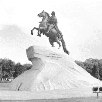-
The number of devices you can talk to is multiplying-first it was your phone, then your car, and now you can boss around your appliances. Children are likely to grow up thinking everything is sentient(有感觉能力的,有知觉的), or at least interactive: One app developer told The Washington Post that after interacting with Amazon’s Alexa, his kid started talking to coasters. But even without chatty gadgets, research suggests that under certain circumstances, people anthropomorphize everyday products.
We personify things because we’re lonely. In one experiment, people who reported feeling isolated were more likely than others to give free will and consciousness to various devices. In turn, feeling attached to objects can reduce loneliness. When college students were reminded of a time they’d been excluded socially, they made up by lying abut their number of friend on social networks- unless they were first given tasks that caused them to interact with their phone as if it had human qualities. The phone apparently stood in for real friends.
When we personify products, they become harder to cast off. After being asked to evaluate their car’s personality, people were less likely to say they are intended to replace it soon. And anthropomorphizing objects is associated with a tendency to accumulate.
So how do people assign characteristics to an object? In part, we rely on looks. On humans, wide faces are associated with dominance. Similarly, people rated cars, clocks, and watches with wide faces as more dominant-looking than narrow-faced ones, and preferred them-especially in competitive situations. An analysis of car sales in Germany found that cars with grilles(格栅) that were upturned like smiles and headlights that were slanted(倾斜的) like narrowed eyes sold best. The purchasers saw these features as increasing a car’s friendliness and aggressiveness, respectively. It’s little wonder so many companies use mascots(吉祥物) to bring brands to life. An analysis of 1151 brand characters found symbols that were human or humanlike to be common.
Personifying products and brands can backfire, however. When a coffee maker was anthropomorphized in an ad (“I am Aroma” versus just “Aroma”), consumers felt betrayed by increases in its price. Now that speech-enabled coffee makers are on the market, maybe the machines can sweet-talk their way back into consumers’ hearts.
1.The word “anthropomorphize” (in paragraph 1) most probably means ________.
A.think highly of something B.find a better way to rate something
C.see something as humans D.use something as often as possible
2.The writer mentions an analysis of car sales in Germany in order to ________.
A.show that friendliness is better received than aggressiveness
B.highlight that a symbol looking like a smile appeals more to people
C.explain why so many companies use mascots to promote their brands
D.illustrate that people will judge something according to its appearance
3.What can be inferred from the last paragraph?
A.Consumers should know more about a product before it is on the market.
B.Products with a mascot are more likely to win consumers’ hearts.
C.Increases in a product’s price may be accepted with a good advertisement.
D.The personification of a product may not always work.
高一英语阅读理解中等难度题查看答案及解析
-
My grandmother often said to me, “You can count the number of your true friends on the fingers of one hand.” For a long time I thought this was true. However, I’ve now discovered my grandmother was only half right. Maybe we do only make a few “best” friends in our lifetime, but those aren’t the only people that we can call friends. There are many different types. Let me tell you about a few of them.
One type of friends is the type I call the “football mom friend”. My neighbor Sally is a good example. We both have kids who play football in a football club, and someone has to take them to practice and pick them up. Sally and I and two other mothers take turns to do this. We meet sometimes and have tea and talk about what our kids are doing, but those are the only times that we meet each other. I enjoy being with these women, but we don’t do anything else together.
Another type is called the “hobby friend”. That’s the person you share an interest or a hobby with. Michael and Cater, who are brothers, are a good example of this type. We’re all in a bird watching club. Every few weekends the members of the club go on a trip to watch different kinds of birds. There’s nothing romantic(浪漫的)about my relationship with Michael and Cater, of course. We just share interest in birds.
Then there’s the “other half of the couple” type of friends. Jim is married to Rose, a friend that I’ve known since college. When Rose married Jim, I realized that I would have to be Jim’s friend if I want to continue to be Rose’s. Jim and I don’t share so many interests, but we do have a friendly relationship.
1.What does the first paragraph tell us about?
A. We need true friends in our lifetime.
B. We have few best friends in our lifetime.
C. We should make new friends.
D. We must be friendly to all our friends.
2.Many people are mentioned in this passage. Who is the writer’s true friend?
A. Sally. B. Michael. C. Jim. D. Rose.
3.Which of the following statements is RIGHT?
A. Finally the writer agrees with her grandmother.
B. Michael and Cater both fall in love with the writer.
C. The writer herself sometimes takes her kid to the football club.
D. Sally and the writer are close friends.
4.How many types of friends are mentioned in the passage?
A. 2. B. 3. C. 4. D. 5
5.From the last paragraph we learn that ________.
A. the writer made friends with Jim only because of Rose
B. Jim was the writer’s good friend at college
C. Rose didn’t want the writer to be a friend of her husband
D. the writer made friends with Rose because of Jim
高一英语阅读理解中等难度题查看答案及解析
-
When you go to St. Petersburg, the number of attractions can seem overwhelming. If you’re short on time, or just want to make sure to hit the highlights, these are the top must-see sights in St. Petersburg.
The Hermitage Museum

The Hermitage Museum is one of the most important sights to see for any visitor to St. Petersburg. There you can see lots of different paintings of old masters inside the Hermitage. Prepare to come face-to-face with classic Western artists.
The Russian Museum

The Russian Museum holds one of the largest collections of Russian art in the world. View Russian art creations through the ages, from Byzantine (拜占庭)-style icons to the Socialist Realism of Stalin’s times.
Kizhi Island

Kizhi Island is an open-air museum of wooden buildings from the Karelia Region of Russia. These impressive structures are made without any nails (钉子) — the wood fits together with joints and grooves (沟槽).
Peterhof

Peterhof is as beautiful as it is fun. You’ll be charged for admission (门票), but go to Peterhof when the fountains (喷泉) are working — during the day in the summer. They are shut off in winter as well as in the evenings.
The Church of Our Savior on Spilled Blood

Love it or hate it, the Church of Our Savior on Spilled Blood is an attractive must-see sight. The beautiful look may make your eyes brighten, and the paintings inside the church will make you say “Wow!”
The Bronze Horseman Statue

The Bronze Horseman is a part of Russian Culture and a symbol of St. Petersburg. Made famous by Alexander Pushkin (普希金), this statue of Peter the Great sitting on his horse can truly show Peter the Great’s influence on the Russian idea of greatness.
1.If you’re interested in paintings, you’d better go to _____.
A.the Hermitage Museum and Peterhof
B.the Hermitage Museum and the Church of Our Savior on Spilled Blood
C.Kizhi Island and the Church of Our Savior on Spilled Blood
D.the Russian Museum and Kizhi Island
2.The man on the Bronze Horse refers to _____.
A.Peter the Great B.Alexander Pushkin
C.Byzantine D.Stalin
3.The main purpose of this passage is to _____.
A.show the wonderful history of Russia
B.introduce the famous buildings in Russia
C.persuade artists to study St. Petersburg
D.attract tourists to visit St. Petersburg
高一英语阅读理解困难题查看答案及解析
-
When you go to St. Petersburg, the number of attractions can seem overwhelming. If you’re short on time, or just want to make sure to hit the highlights, these are the top must-see sights in St. Petersburg.
The Hermitage Museum

The Hermitage Museum is one of the most important sights to see for any visitor to St. Petersburg. There you can see lots of different paintings of old masters inside the Hermitage. Prepare to come face-to-face with classic Western artists.
The Russian Museum

The Russian Museum holds one of the largest collections of Russian art in the world. View Russian art creations through the ages, from Byzantine (拜占庭)-style icons to the Socialist Realism of Stalin’s times.
Kizhi Island

Kizhi Island is an open-air museum of wooden buildings from the Karelia Region of Russia. These impressive structures are made without any nails (钉子) — the wood fits together with joints and grooves (沟槽).

Peterhof

Peterhof is as beautiful as it is fun. You’ll be charged for admission (门票), but go to Peterhof when the fountains (喷泉) are working — during the day in the summer. They are shut off in winter as well as in the evenings.
The Church of Our Savior on Spilled Blood
Love it or hate it, the Church of Our Savior on Spilled Blood is an attractive must-see sight. The beautiful look may make your eyes brighten, and the paintings inside the church will make you say “Wow!”
The Bronze Horseman Statue

The Bronze Horseman is a part of Russian Culture and a symbol of St. Petersburg. Made famous by Alexander Pushkin (普希金), this statue of Peter the Great sitting on his horse can truly show Peter the Great’s influence on the Russian idea of greatness.
1.If you’re interested in paintings, you’d better go to _____.
A.the Hermitage Museum and Peterhof
B.the Hermitage Museum and the Church of Our Savior on Spilled Blood
C.Kizhi Island and the Church of Our Savior on Spilled Blood
D.the Russian Museum and Kizhi Island
2.The man on the Bronze Horse refers to _____.
A.Peter the Great B.Alexander Pushkin
C.Byzantine D.Stalin
3.What can we know from the passage?
A.The fountains in Peterhof can be seen all year round.
B.The largest collection of Russian art is in the Hermitage Museum.
C.The buildings on Kizhi Island are made of wood.
D.You can visit Peterhof free of charge.
4.The main purpose of this passage is to _____.
A.show the wonderful history of Russia
B.introduce the famous buildings in Russia
C.persuade artists to study St. Petersburg
D.attract tourists to visit St. Petersburg
高一英语阅读理解中等难度题查看答案及解析
-
1. . One of the best things you can possibly do is to start you own club. It’s great fun especially if you are the sort of person who feels there’s never anything to do during the school holidays.
The first thing you need to come up with is an idea for your club. 2.. Pets, clothes, pop music or dancing groups, sports, making things? The list is endless.
Next you need some friends to be in your club with you. 3.. All you need is three or four other people who are interested in the same thing as you.
4. .You should all sit down somewhere together with lots of pieces of paper and write down every name you can think up. That’ll keep you busy for ages.
At your first meeting you should make up a rule book. And the first rule should be no grown-ups or little/big brothers or sisters! The best clubs are always secret!
Now you have just about everything you need, except membership cards. These are very important and again you can speed a lot of time making them. 5. . Why not leave some space for a photo of yourself? That will make the membership card really look like it.
So there you are, get clubbing! Once you get started you’ll think of loads of more interesting things to do!
A. That’s easy.
B. Enjoy your own club!
C. Invite a designer to join you.
D .What are you interest in?
E. Some vacation is just around the corner.(即将来临)
F. Then you need to pick a name for your club.
G. Use a bright thick pen to make a special design.
高一英语七选五中等难度题查看答案及解析
-
You may think that choosing to lose weight requires a lot of effort and pain.
The truth is, you can lose weight, feel healthier, and look amazing, all by doing small things every day. 1. When you’re ready to lose a few pounds, check out these five small everyday things you can do.
2.
Believe it or not, the diameter of your dinner plate can have a dramatic impact on how much food you eat at any time of the day. The bigger your plate, the more you can fit on it, and the more you put into your body.
Use a Food Diary or App
It’s so easy to sit at your desk or on the couch eating up an entire bag of potato chips, or a full packet of cookies.3.
If you keep a food diary or app outlining what you eat, how much of it, and how many calories it has, you may be more inclined to control your food intake.
Drink More Water
4.Your body needs more water than you’re probably giving it, and you may be reading the signs all wrong. Keep a water bottle on hand, drinking water throughout the day. By doing so, you can control your appetite while also making sure your body is not lack of water.
Exercise More
It seems like a given – you exercise, you lose weight. However, it’s not only those 10-mile runs that make all the difference. 5. For instance, park further away at the grocery store, take the steps instead of the elevator and jog on the spot during TV ad breaks of your favorite show.
A.Use Smaller Dishes
B.Control your food intake.
C.You have to make plans for exercise.
D.All too often, we mistake thirst for hunger.
E.Many small changes can make a significant difference.
F.Exercise doesn’t have to be something you have to think about to do, and it can be fun.
G.However, if you knew how many calories were in them, you may decide to change your mind.
高一英语七选五中等难度题查看答案及解析
-
1. one of the best things you can possibly do is to start you own club. It’s great fun especially if you are the sort of person who feels there’s never anything to do during the school holidays.
The first thing you need to come up with is an idea for your club. 2. pets, clothes, pop music or dancing groups, sports, making things? The list is endless.
Next, you need some friends to be in your club with you. 3. all you need is three or four other people who are interested in the same thing as you.
4. you should all sit down somewhere together with lots of pieces of paper and write down every name you can think up. That’ll keep you busy for ages.
At your first meeting you should make up a rule book. And the first rule should be no grown-ups or little/ big brothers or sisters! The best clubs are always secret!
Now you have just about everything you need, except membership cards. These are very important and again you can speed a lot of time making them. 5. why not leave some space for a photo of yourself? That will make the membership card really look like it.
So there you are, get clubbing! Once you get started, you’ll think of loads of more interesting things to do!
A. that’s easy
B. enjoy your own club!
C. invite a designer to join you.
D. what are you interested in?
E. Some vacation is just around the corner.
F. Then you need to pick a name for your club.
G. use a bright thick pen to make a special design.
高一英语完形填空简单题查看答案及解析
-
1. one of the best things you can possibly do is to start you own club. It’s great fun especially if you are the sort of person who feels there’s never anything to do during the school holidays.
The first thing you need to come up with is an idea for your club. 2. pets, clothes, pop music or dancing groups, sports, making things? The list is endless.
Next, you need some friends to be in your club with you. 3. all you need is three or four other people who are interested in the same thing as you.
4. you should all sit down somewhere together with lots of pieces of paper and write down every name you can think up. That’ll keep you busy for ages.
At your first meeting you should make up a rule book. And the first rule should be no grown-ups or little/ big brothers or sisters! The best clubs are always secret!
Now you have just about everything you need, except membership cards. These are very important and again you can speed a lot of time making them. 5. why not leave some space for a photo of yourself? That will make the membership card really look like it.
So there you are, get clubbing! Once you get started, you’ll think of loads of more interesting things to do!
A.That’s easy
B.Enjoy your own club!
C.Invite a designer to join you.
D.What are you interested in?
E.Some vacation is just around the corner.
F.Then you need to pick a name for your club.
G.Use a bright thick pen to make a special design.
高一英语七选五简单题查看答案及解析
-
_1._ One of the best things you can possibly do is to start you own club. It’s great fun especially if you are the sort of person who feels there’s never anything to do during the school holidays.
The first thing you need to come up with is an idea for your club. _2._ Pets, clothes, pop music or dancing groups, sports, making things? The list is endless.
Next you need some friends to be in your club with you. ________3._ All you need is three or four other people who are interested in the same thing as you.
________4.________ You should all sit down somewhere together with lots of pieces of paper and write down every name you can think up. That’ll keep you busy for ages.
At your first meeting you should make up a rule book. And the first rule should be no grown-ups or little/big brothers or sisters! The best clubs are always secret!
Now you have just about everything you need, except membership cards. These are very important and again you can speed a lot of time making them. ________5.________ Why not leave some space for a photo of yourself? That will make the membership card really look like it.
So there you are, get clubbing! Once you get started you’ll think of loads of more interesting things to do!
A. That’s easy.
B. Enjoy your own club!
C. Invite a designer to join you.
D. What are you interest in?
E. Some vacation is just around the corner.
F. Then you need to pick a name for your club.
G. Use a bright thick pen to make a special design.
高一英语信息匹配中等难度题查看答案及解析
-
The number of people who can afford to buy their own houses ________ more than 80%, but a number of houses _________.
A. are; hasn’t been built B. are; has built
C. is; haven’t been built D. is; have built
高一英语单项填空中等难度题查看答案及解析